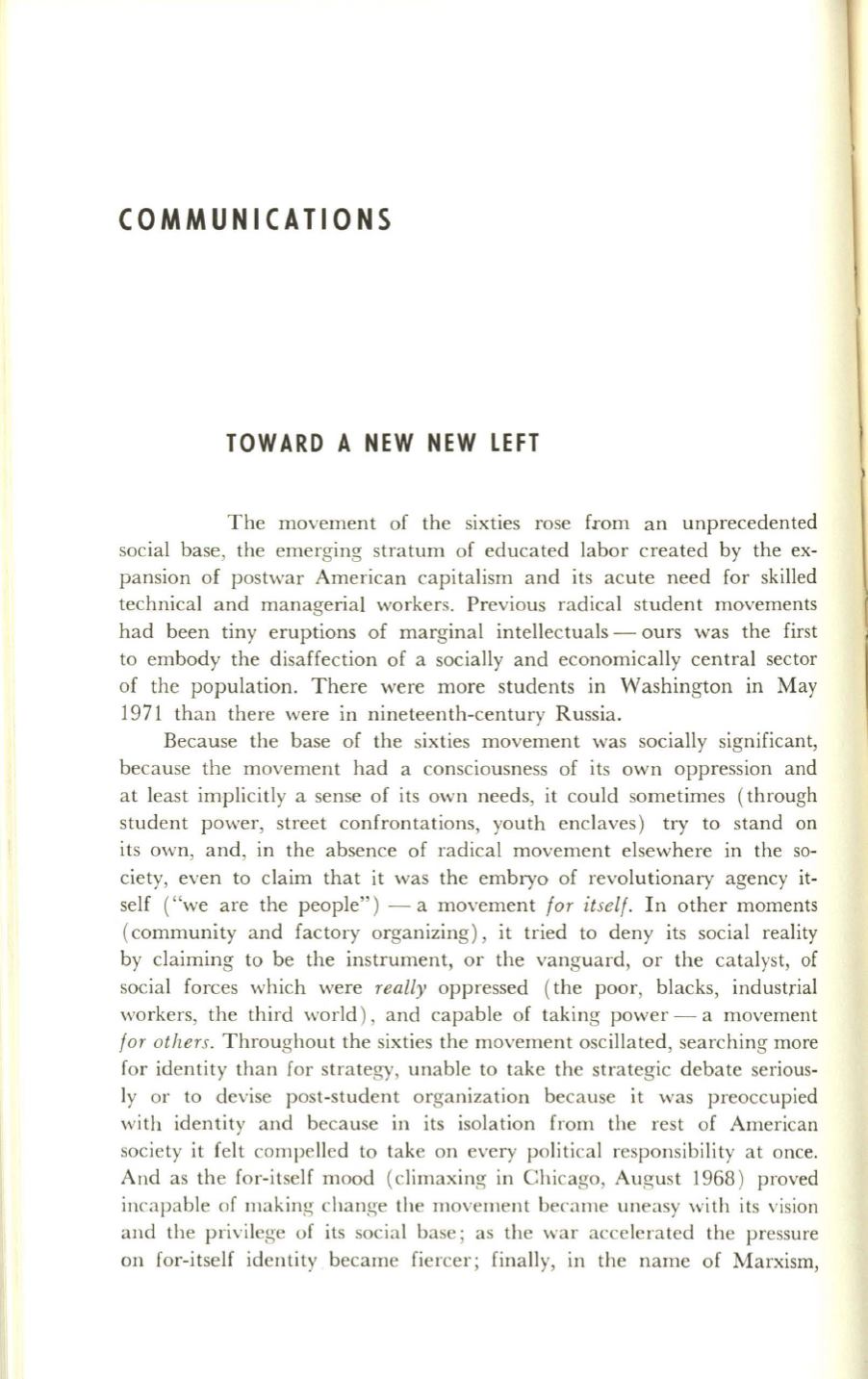
COMMUNICATIONS
TOWARD A NEW NEW LEFT
The movement of the sixties rose from an unprecedented
social base, the emerging stratum of educated labor created by the ex–
pansion of postwar American capitalism and its acute need for skilled
technical and managerial workers. Previous radical student movements
had been tiny eruptions of marginal intellectuals - ours was the first
to embody the disaffection of a socially and economically central sector
of the population. There were more students in Washington in May
1971 than there were in nineteenth-century Russia.
Because the base of the sixties movement was socially significant,
because the movement had a consciousness of its own oppression and
at least implicitly a sense of its own needs, it could sometimes ( through
student power, street confrontations, youth enclaves) try to stand on
its own, and, in the absence of radical movement elsewhere in the so–
ciety, even to claim that it was the embryo of revolutionary agency it–
self ("we are the people" ) - a movement
for itself.
In
other moments
(community and factory organizing), it tried to deny its social reality
by claiming to be the instrument, or the vanguard, or the catalyst, of
social forces which were
really
oppressed (the poor, blacks, industrial
workers, the third world), and capable of taking power - a movement
for others.
Throughout the sixties the movement oscillated, searching more
for identity than for strategy, unable to take the strategic debate serious–
ly or to devise post-student organization because it was preoccupied
with identity and because in its isolation from the rest of American
society it felt compelled to take on every political responsibility at once.
And as the for-itself mood (climaxing in Chicago, August 1968 ) proved
inca pable of making change the movement became uneasy with its vision
and the privilege of its social base ; as the war accelerated the pressure
on for-itself identity became fiercer; finally, in the name of Marxism,


